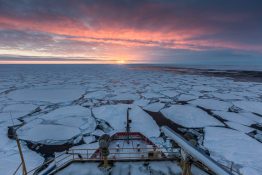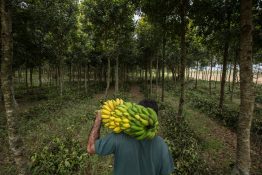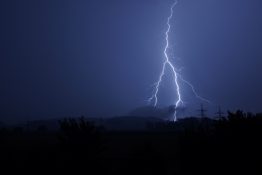In the Southern Hemisphere, the ice cover around Antarctica gradually expands from March to October each year. During this time the total ice area increases by 6 times to become larger than Russia. The sea ice then retreats at a faster pace, most dramatically around December, when Antarctica experiences constant daylight. New research led by the University of Washington explains why the ice retreats so quickly: Unlike other aspects of its behavior, Antarctic sea ice is just following simple rules of physics.
Read more at UW News »Planting trees in pastureland provides significant cooling in the tropics
Farmers struggling to adapt to rising temperatures in tropical regions can unleash the benefits of natural cooling, alongside a host of other wins, simply by dotting more trees across their pasturelands. For the first time, a study led by the University of Washington puts tangible numbers to the cooling effects of this practice. Researchers at the UW and The Nature Conservancy, along with Duke University, the University of California San Diego and Stony Brook University Hospital, find that adding trees to pastureland, technically known as silvopasture, can cool local temperatures by up to 2.4 C (4.3 F) for every 10 metric tons of woody material added per hectare (about 4 tons per acre) depending on the density of trees, while also delivering a range of other benefits for humans and wildlife.
Read more at UW News »Can artificial intelligence revolutionize weather forecasting?
In an age of rapidly advancing technology, humans are fascinated with AI, which is shorthand for artificial intelligence. Many movies and TV shows feature this techno-wizardry, whether it’s AI beings starring in our favorite Marvel movies or the creation of deeply imaginative worlds that depict post-apocalyptic robot takeovers. The idea of deep learning machines is one we often think about in fictional contexts, but at the University of Washington researchers are looking at practical, real-world applications.
Read more »Deforestation-fueled heat already affecting millions of outdoor workers in the tropics
Pledges made in Glasgow at the recent United Nations Climate Change Conference, or COP26, are urgently needed by communities on the front lines of forest loss, according to a new study by a multidisciplinary team from the University of Washington, Duke University and The Nature Conservancy. New research shows how much local temperature rises in the tropics — compounded by accelerating deforestation — may already be jeopardizing the well-being and productivity of outdoor workers.
Read more at UW News »Artificial intelligence can create better lightning forecasts
Lightning is one of the most destructive forces of nature, as in 2020 when it sparked the massive California Lightning Complex fires, but it remains hard to predict. A new study led by the University of Washington shows that machine learning — computer algorithms that improve themselves without direct programming by humans — can be used to improve lightning forecasts. Better lightning forecasts could help to prepare for potential wildfires, improve safety warnings for lightning and create more accurate long-range climate models.
Read more at UW News »





